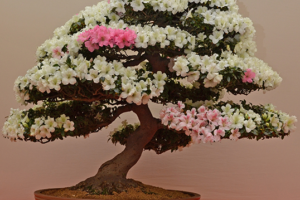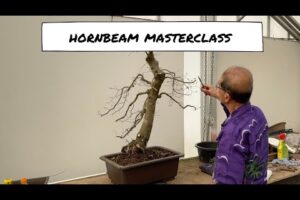Understanding the history of bonsai will help you enjoy this wonderful hobby. As you probably know, if you’re here on this site, bonsai is a Japanese term associated with the art of maintaining small trees in little pots. Specifically, the phoneme “bon” means a small, tray-like pot (usually, these are ovular shaped, but sometimes they are square), and “sai” means a planting, i.e. a little tree, often a little sapling (at least, that’s how they start out). Interestingly enough, the term “bonsai” actually is derived from a Chinese word, “penzai” or “penjing.” Penjing is an ancient form of plant display, artistically designed, though it can apply to any plants (not just trees!). So far, our best guess is that this Chinese art—intended to be imitations of real-life landscapes—originated in Neolithic times, about 20,000 years ago! How’s that for tradition?
So, Japanese travelers to China brought back the tradition sometime during the 600s (that’s about 1400 years ago, now). Though, these were slightly less recognizable art. Really, bonsai started to look like present-day bonsai around the Middle Ages—and isn’t that really the time period where all modern culture comes from anyway? The idea was that nature, of course, was beautiful but it couldn’t be truly beautiful until it was molded into a form that represented humanity. That’s certainly a bit different from present-day sensibility, isn’t it? Anyway, in the Middle Ages, having bonsai was a sign of being well-off, just like being fat and pale were signs of being wealthy; it was a sign that you had time to sit around and have leisure hobbies indoors. Unsurprisingly, the tradition was passed around and kept alive through religion; Chinese Buddhist monks would come to Japan and show political leaders the art of penjing. It didn’t take long for the art to be mentioned in poetry and prose of the age. It even made an appearance in art, wood-carvings, and such.
By the late 1700s, the art was pretty popular all over the country and they even had what seemed like county fair competition, representatives from different provinces would bring bonsais to Kyoto (which was the capital at the time, and remained the capital until 1869—just a few years after the end of our Civil War) for judging. Also, fun fact: the first Japanese photo of a bonsai tree was around 1861 (around the same time Mathew Brady was snapping pics of the First Battle of Bull Run!). This was really when bonsai was starting to come into its own. The capital was moved to Tokyo and bonsai artists were starting to use hemp fiber to mold and shape branches of their little trees. They even started mass-producing bonsai for foreign export and it became even more popular when the trees were taken to international exhibitions in Europe and the United States. Not to mention, Japanese immigration to both areas in the late 1800s and early 1900s. In the early to mid-1900s, they started developing the shaping techniques we used today: wire aluminum, steel wire, and other modern pruning tools. Even the War and the subsequent American occupation didn’t slow American interest in the art. Officers and their families living in Japan were able to take classes on bonsai while there. But the big trend came from the number and scope of bonsai exhibitions around the world. This is why we refer to the art as bonsai and not penjing, in case you were wondering. Find out more about the history and care of bonsai.

In the 60s, people began to write books about it and bonsai masters were available to the western world outside of Japan itself. Now, as you may have realized, there is a whole industry around bonsai. There are specific trees chosen for the art as well as special soil and tools (and wire!). So, naturally, there developed blogs and even local clubs for enthusiasts to gather on a regular basis.
xxxx






Leave a Reply
Your email is safe with us.
You must be logged in to post a comment.